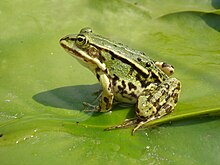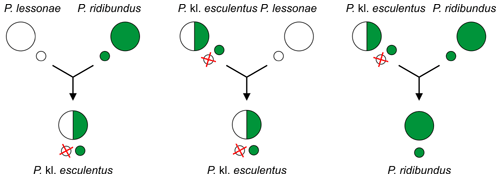
Polyploidy is a condition in which the cells of an organism have more than one pair of (homologous) chromosomes. Most species whose cells have nuclei (eukaryotes) are diploid, meaning they have two complete sets of chromosomes, one from each of two parents; each set contains the same number of chromosomes, and the chromosomes are joined in pairs of homologous chromosomes. However, some organisms are polyploid. Polyploidy is especially common in plants. Most eukaryotes have diploid somatic cells, but produce haploid gametes by meiosis. A monoploid has only one set of chromosomes, and the term is usually only applied to cells or organisms that are normally diploid. Males of bees and other Hymenoptera, for example, are monoploid. Unlike animals, plants and multicellular algae have life cycles with two alternating multicellular generations. The gametophyte generation is haploid, and produces gametes by mitosis; the sporophyte generation is diploid and produces spores by meiosis.
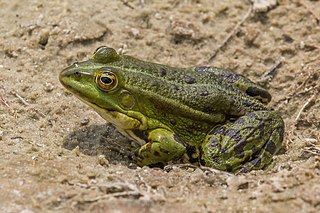
The marsh frog is a species of water frog native to Europe and parts of western Asia.
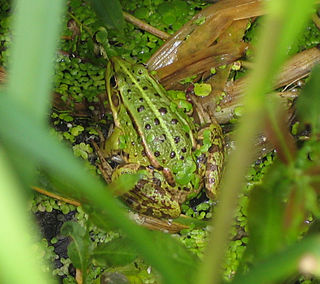
The pool frog is a European frog in the family Ranidae. Its specific name was chosen by the Italian herpetologist Lorenzo Camerano in 1882, in order to honour his master Michele Lessona.

Hybrid speciation is a form of speciation where hybridization between two different species leads to a new species, reproductively isolated from the parent species. Previously, reproductive isolation between two species and their parents was thought to be particularly difficult to achieve, and thus hybrid species were thought to be very rare. With DNA analysis becoming more accessible in the 1990s, hybrid speciation has been shown to be a somewhat common phenomenon, particularly in plants. In botanical nomenclature, a hybrid species is also called a nothospecies. Hybrid species are by their nature polyphyletic.

Parthenogenesis is a natural form of asexual reproduction in which growth and development of an embryo occur directly from an egg, without need for fertilization. In animals, parthenogenesis means development of an embryo from an unfertilized egg cell. In plants, parthenogenesis is a component process of apomixis. In algae, parthenogenesis can mean the development of an embryo from either an individual sperm or an individual egg.

Graf's hybrid frog is a hybridogenic species in the true frog family Ranidae. It is found in France and Spain.
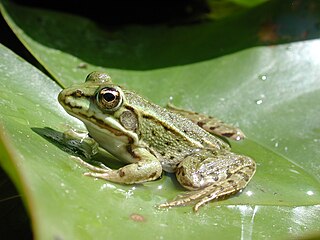
The Italian edible frog is a hybridogenic species in the true frog family Ranidae. These frogs are the offspring of P. bergeri and either P. ridibundus or the edible frog which is itself of hybrid origin.
Green frog or Green Frog, may refer:
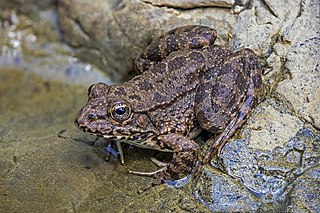
Pelophylax is a genus of true frogs widespread in Eurasia, with a few species ranging into northern Africa. This genus was erected by Leopold Fitzinger in 1843 to accommodate the green frogs of the Old World, which he considered distinct from the brown pond frogs of Carl Linnaeus' genus Rana.
Hyaloklossia is a genus of parasitic alveolates in the phylum Apicomplexa. Only two species in this genus are currently recognised.

In biology, a klepton and synklepton is a species that requires input from another biological taxon to complete its reproductive cycle. Specific types of kleptons are zygokleptons, which reproduce by zygogenesis; gynokleptons which reproduce by gynogenesis, and tychokleptons, which reproduce by a combination of both systems.
Parthenogenesis is a form of reproduction where eggs develop without fertilization, resulting in unisexual species. This phenomenon is closely related with reproductive modes such as hybridogenesis, where fertilization occurs, but the paternal DNA is not passed on. Among amphibians, it is seen in numerous frog and salamander species, but has not been recorded in caecilians.
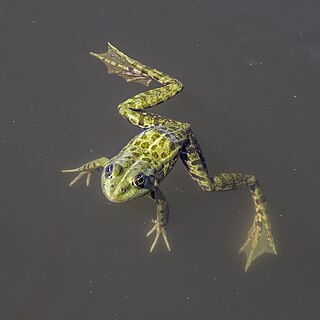
The fertile hybrids of European water frogs reproduce by hybridogenesis (hemiclonally). This means that during gametogenesis, they discard the genome of one of the parental species and produce gametes of the other parental species. The first parental genome is restored by fertilization of these gametes with gametes from the first species. In all-hybrid populations of the edible frog Pelophylax kl. esculentus, however, triploid hybrids provide this missing genome.
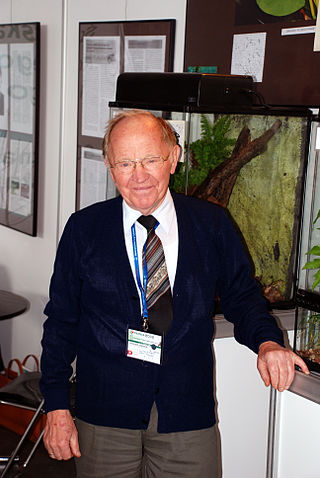
Leszek Berger was a Polish herpetologist and malacologist.
Annemarie Ohler is an Austrian herpetologist and professor who concentrates on the taxonomy of amphibians. She has 3,602 citations and an h-index of 36.
